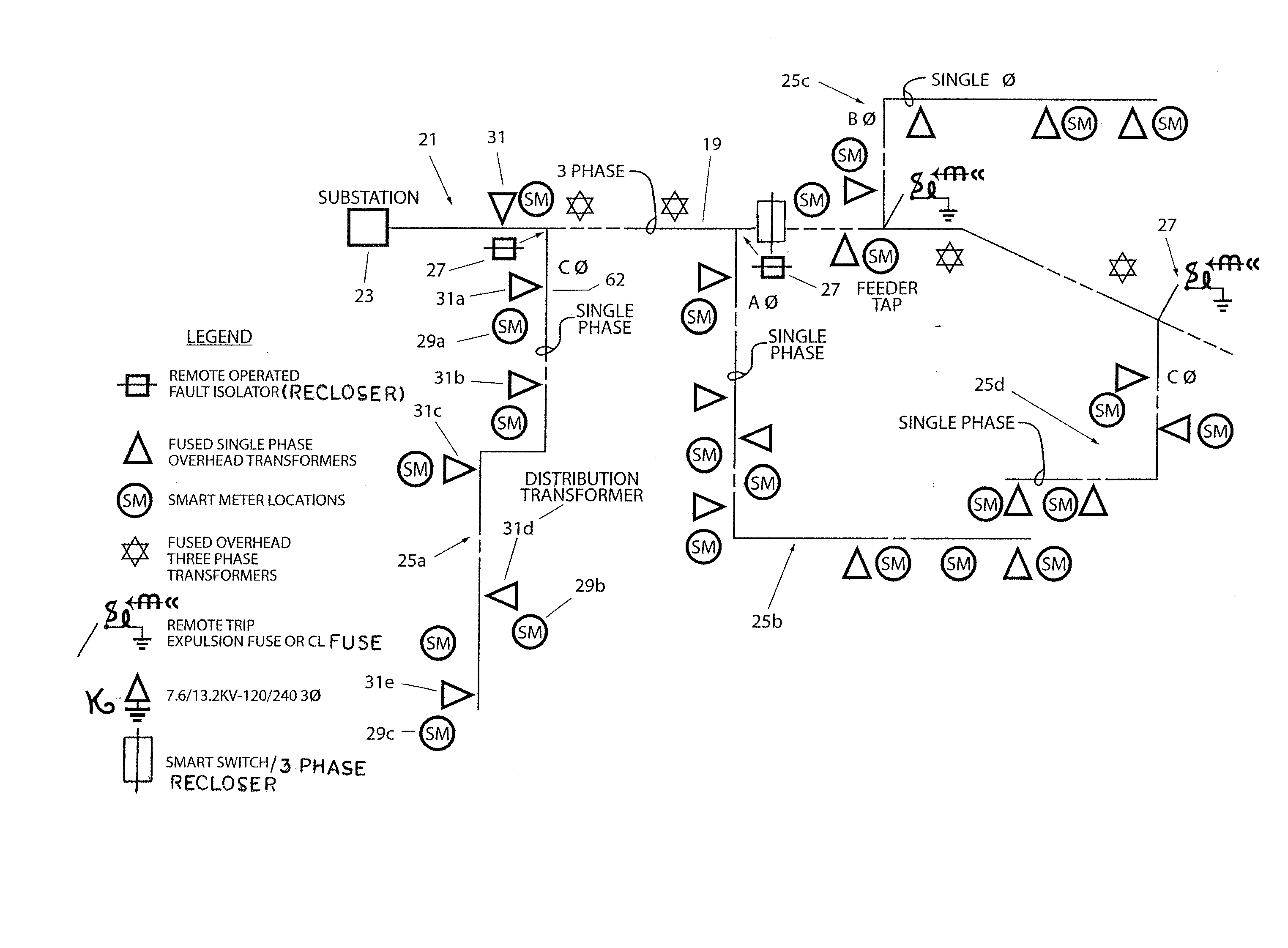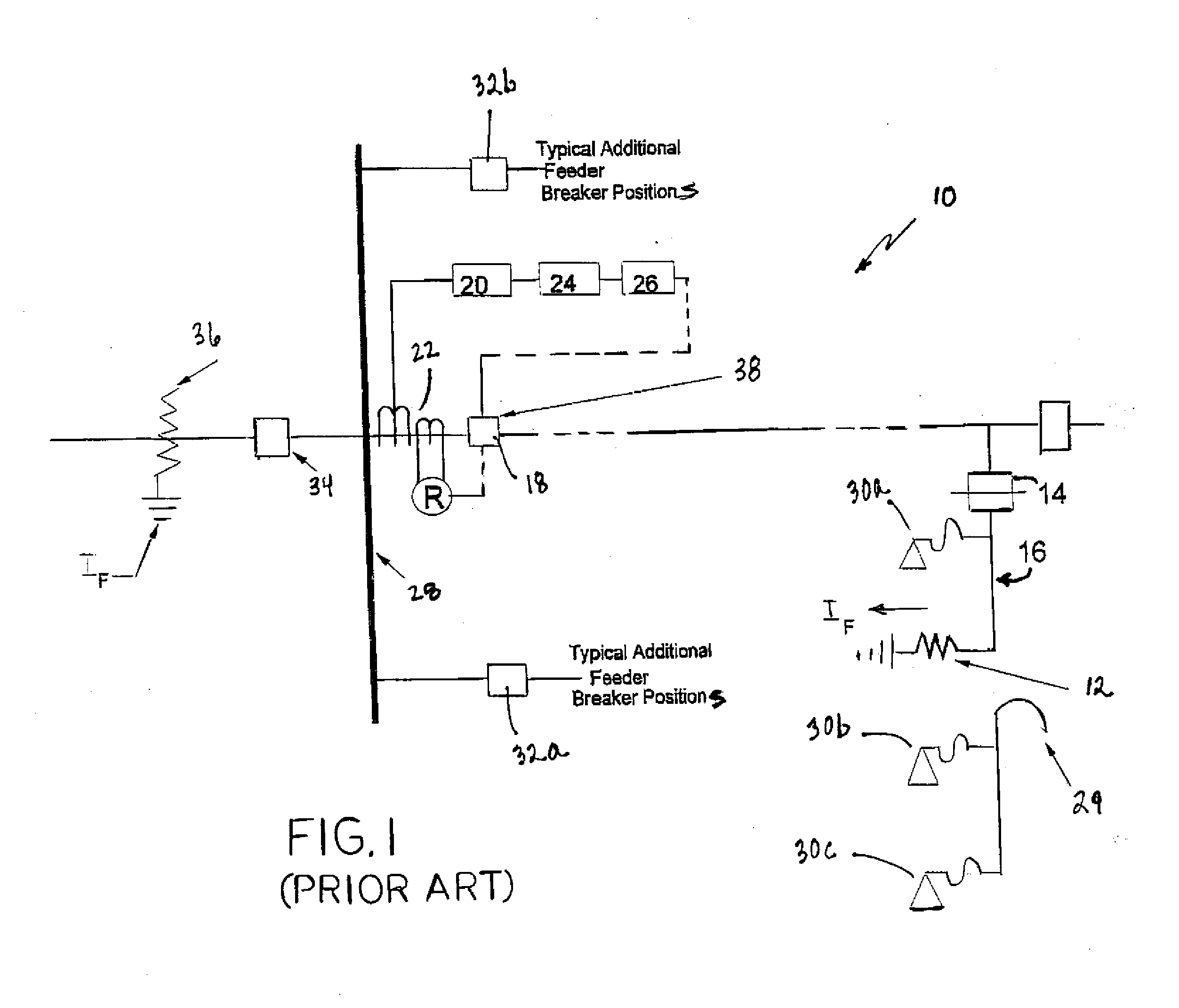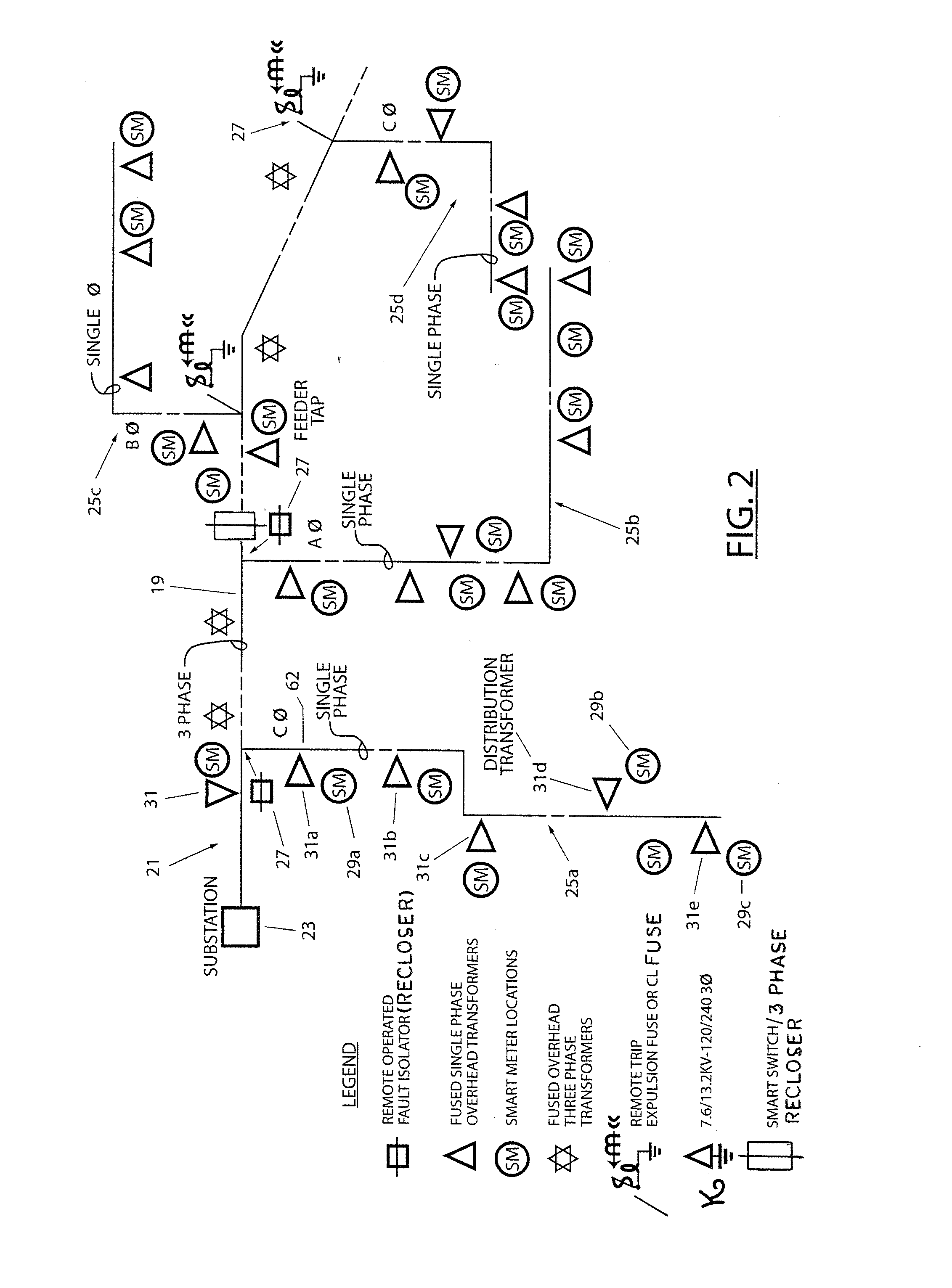Low fault current isolator system
a fault current isolator and low fault technology, applied in the direction of coupling device connection, instruments, sustainable buildings, etc., can solve the problems of inability to distinguish low fault current (high impedance fault) from normal load current, difficult to isolate with present technology, etc., to achieve low cost, safe and fast
- Summary
- Abstract
- Description
- Claims
- Application Information
AI Technical Summary
Benefits of technology
Problems solved by technology
Method used
Image
Examples
Embodiment Construction
[0044]Referring to FIG. 2, there is shown a simplified schematic diagram of a portion of an electrical distribution system 21 incorporating an arrangement for isolating high impedance faults with low current in accordance with the present invention. The electrical power distribution system 21 includes a substation 23 and a three-phase main feeder line 19. Coupled to the main feeder line 19 are plural branches 25a, 25b, 25c and 25d, each of which receives a single phase in the three phase power distribution system 21. Each of the branches is essentially the same, with additional details of only the first branch 25a provided herein for simplicity, with the same identifying numbers used in each of the branches to identify the same components in these branches. The first branch 25a includes a plural distribution transformers 31a, 31b, 31c, 31d and 31e, each of which is shown as a triangle in the figure. The first branch 25a further includes a plurality of smart meters, three of which ar...
PUM
 Login to View More
Login to View More Abstract
Description
Claims
Application Information
 Login to View More
Login to View More - R&D
- Intellectual Property
- Life Sciences
- Materials
- Tech Scout
- Unparalleled Data Quality
- Higher Quality Content
- 60% Fewer Hallucinations
Browse by: Latest US Patents, China's latest patents, Technical Efficacy Thesaurus, Application Domain, Technology Topic, Popular Technical Reports.
© 2025 PatSnap. All rights reserved.Legal|Privacy policy|Modern Slavery Act Transparency Statement|Sitemap|About US| Contact US: help@patsnap.com



